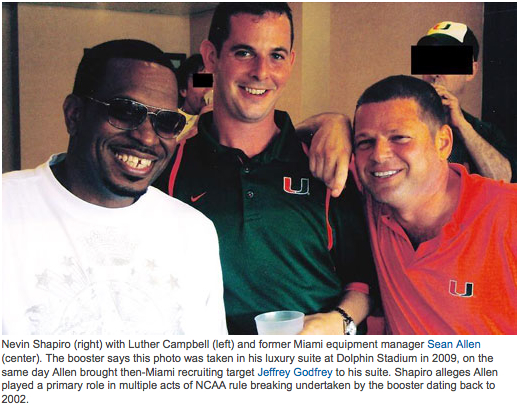While his piece is full of emotion and not entirely rational, I can't help but acknowledge the fact that after 28 games, Muschamps' record sits at 19-9. Ron Zook, after 28 games as Florida head coach, was 17-11.
Looking back, it's hard to argue that Florida didn't make the right decision by moving on from Zook after a harrowing loss to Mississippi State on Oct. 23, 2004. The Bulldogs were were 1-5 at the time and had dropped a 27-13 contest to UAB at home just two weeks earlier. This followed crushing losses at Tennessee, where a questionable late personal foul call against Dallas Baker directly allowed Tennessee the opportunity to move into field goal range to win the game. And, of course, there was the "Leak slide" at home, three weeks later that would also lead to setting up LSU for a game-winning score. The Mississippi State debacle what just the latest in a run of "oh-so-close" losses for Zook which eventually cost him his job.
But consider this:
– As many Floridians remember, 2004 was the "Year of the Hurricane," where the state was battered by four named storms (Bonnie, Charley, Frances, Jeanne.) Frances forced the postponement of the opening game against Middle Tennessee State to ... you guessed it, the bye that was scheduled for the week before Mississippi State. It didn't seem like a big deal at the time, but if the Gators get the week off, perhaps they pull off what was a very winnable contest on the road. But let's not forget that Starkville had proved to be a house of horrors for Steve Spurrier as well. He was 0-2 at Davis-Wade Stadium. In fact, Mississippi State was the only SEC road victory he lacked on his resume as head coach for the Gators.
– Then, there was the single yard – one measly yard! – that cost Florida the chance to run out the clock against LSU. A win would have given Zook his second straight victory over Lord Saban, by the way.
– And of course, we cant forget the Dallas Baker penalty (Which ramped up the "LACK OF DISCIPLINE!!!" chatter around Zook's regime ... sound familiar?) Although Baker was guilty of a foolish mistake, how the side judge elected to call Baker for a personal foul, after he clearly saw Jonathan Wade instigate the skirmish is still beyond explanation.
If anything, Zook was guilty of bad luck. Sometimes all it takes is one questionable call, one yard and one rescheduled game because of a Hurricane to cost a coach his job. Again, I don't think Gators fans are upset with the results, but you can still make a pretty strong case that Zook was never afforded the opportunity to succeed at UF. Of course, Florida coaches have to operate under a razor-thin margin of error. That comes with the territory, as a result of the incredible success Steve Spurrier, and then Urban Meyer achieved in Gainesville. If anyone knows that, it's Will Muschamp.
But back to this notion of the team being "undisciplined." Penalties seemed to be the biggest exception Shulman took with Muschamp to make this point. But Florida has had a penalty issue really dating back to Spurrier's first days as head coach in Gainesville. To wit, here are the penalty statistics for key years since the 1996 championship season:
1996: 10.4 for 91.3 yards (First National Title)
2001: 9.2 for 65.5 yards (Maybe Spur-dog's best team?)
2004: 8.8 for 70.3 yards (The year Zook was fired)
2006: 8.3 for 63.4 yards (Meyer's first championship)
2008: 7.3 for 59.9 yards (The second BCS title)
2009: 6.8 for 52.5 yards (Tim and the gang's final ride)
In 2012, the Gators averaged 8.1 penalties per game for 69.2 yards. Through two games this season (still much too small of a sample size), they have accrued an average of 10 penalties for 70 yards per game. Meyer actually did do a solid job of slowly getting the penalty numbers down. But under Muschamp, they haven't risen all that dramatically either. And they certainly aren't at the levels the Gators seemed to experience throughout their greatest successes in the 90's.
So, what it really comes down to, is trying to tilt the numbers to fit the narrative. Muschamp doesn't win in a way that is as stylish and as fun to watch as the Spurrier years, or even the pinnacle of offensive success under Meyer in 2007 and '08. If Muschamp is going to win with field position, special teams and defense (which should be noted, are three things Meyer strongly preached when he got to UF in 2004), then he will have to win. And win big. But Muschamp knows that. All I'm saying is, let's let the season play out before we start speculating about the future. Give the Florida staff a chance before throwing them under the bus. Because continuously cycling through coaches isn't always the answer either. And if you need an example as to why that's not the preferred route, look no further than the gold standard in college football today: Alabama.
